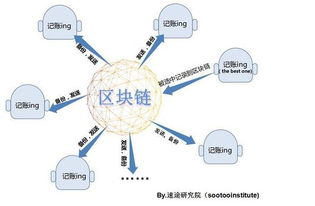比特币为什么要算数学题
Title: Exploring Bitcoin Mathematical Concepts
Bitcoin, the pioneering cryptocurrency, operates on intricate mathematical principles. Let's delve into some of the fundamental mathematical aspects of Bitcoin:
1. Cryptographic Hash Functions:
Bitcoin heavily relies on cryptographic hash functions, particularly SHA256 (Secure Hash Algorithm 256bit). These functions take an input (data) and produce a fixedsize string of characters, called a hash value or digest. Key properties of cryptographic hash functions include:
Deterministic
: For the same input, the hash function always produces the same output.
Quick Computation
: Efficiently computable for any input.
Preimage Resistance
: Given a hash value, it's computationally infeasible to determine the original input.
Collision Resistance
: It's extremely unlikely for two different inputs to produce the same hash value.2. Proof of Work (PoW):
Bitcoin mining involves solving complex mathematical puzzles through the Proof of Work mechanism. Miners compete to find a nonce (a random number) that, when combined with the block's data, generates a hash value below a certain target threshold. This process requires considerable computational power and electricity.
The difficulty of the puzzle adjusts dynamically to maintain a consistent block generation time (approximately 10 minutes per block). Miners invest in powerful hardware (ASICs) to increase their chances of solving the puzzle and earning the block reward.
3. Elliptic Curve Cryptography (ECC):
Bitcoin uses Elliptic Curve Digital Signature Algorithm (ECDSA) for key generation and transaction signing. ECDSA relies on the mathematical properties of elliptic curves over finite fields.

Public/Private Key Pair
: Each user possesses a public key (derived from a private key) and a corresponding private key used for signing transactions.
Security
: ECDSA provides a high level of security, even with relatively short key lengths compared to other algorithms like RSA.4. Block Hashing:
Each block in the Bitcoin blockchain contains a header, which includes various pieces of information such as the previous block's hash, a timestamp, the Merkle root of transactions, and the nonce. Miners repeatedly change the nonce value and compute the block's hash until they find a hash that meets the difficulty target.
5. Difficulty Adjustment:
Bitcoin's network autonomously adjusts the mining difficulty every 2016 blocks (approximately every two weeks). This adjustment ensures that blocks are produced at a constant rate, irrespective of changes in the total network hash rate. If blocks are being mined faster than the target rate, the difficulty increases, and vice versa.
Conclusion:
Bitcoin's mathematical foundations underpin its security, decentralization, and trustless nature. Understanding these mathematical concepts is crucial for grasping the intricacies of Bitcoin's operation and its broader implications for the future of finance and technology.
This brief exploration scratches the surface of Bitcoin's mathematical intricacies, offering a glimpse into the sophisticated mechanisms driving the world's first and most popular cryptocurrency.











